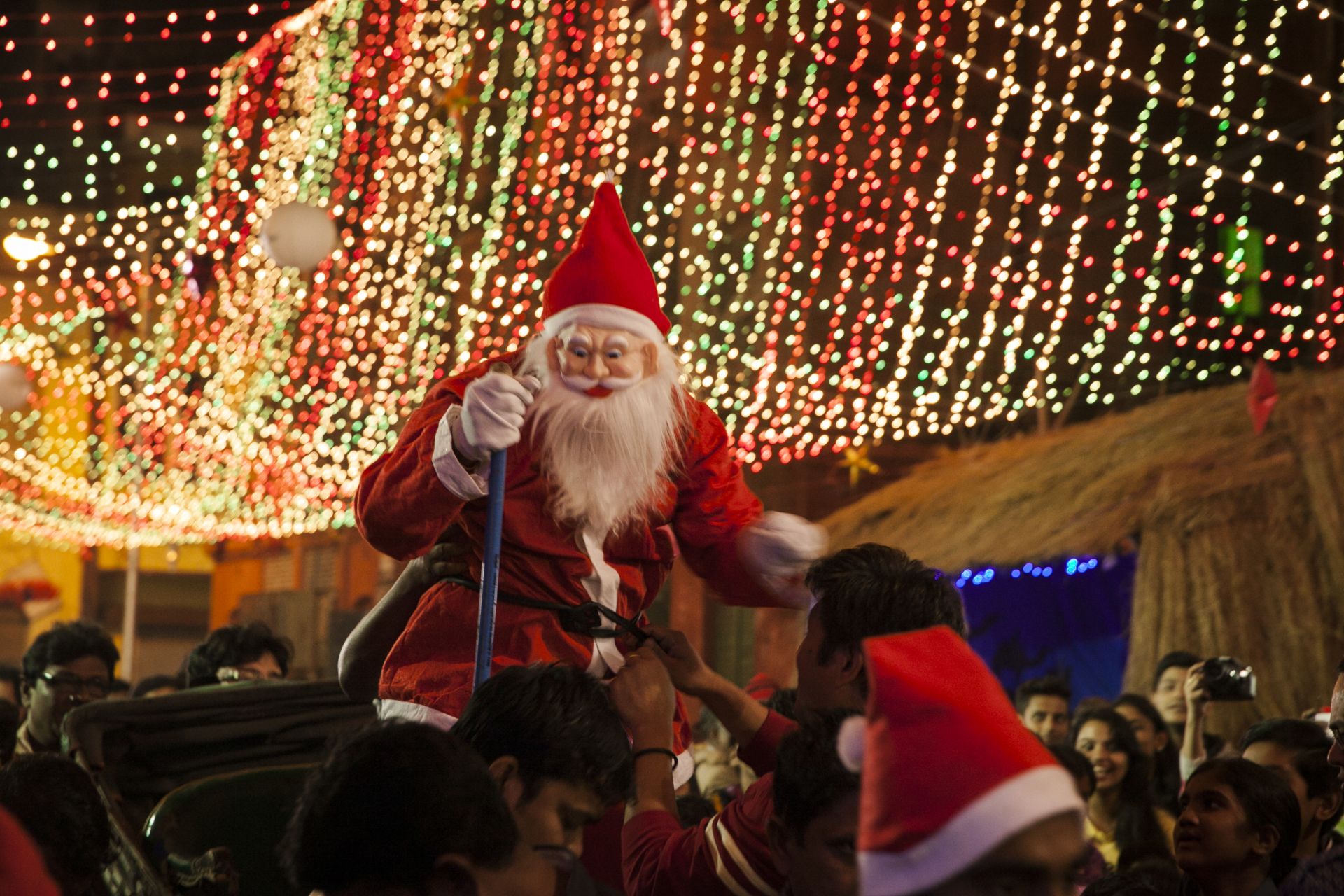In the 1950s and ’60s, women baked cakes in the abandoned ammunition boxes left behind by British troops in the villages of Nagaland, a state in northeast India. The Naga writer Easterine Kire recalls how wives of Christian missionaries taught English and cake-baking to young girls, including her mother. While they didn’t really pick up the language, the tradition of baking cakes was passed down “from mother to daughter and from daughter to granddaughter.” It was the men who thought to repurpose the boxes — they were airtight, preserved heat well and fit perfectly over the wood fire. Since they had no temperature controls, the baker had to sit by the fire, constantly stoking it and eventually reducing it to embers. The timing had to be perfect: A minute too soon or too late could alter the fate of the cake. The boxes eventually ended up becoming part of a family’s heirloom until electric ovens became commonplace.
In the opposite corner of India, in Kerala in the deep south, several bakeries trace their history to the Mambally Royal Biscuit Factory in Thalassery, established in the late 19th century. Its founder, Mambally Bapu, is said to have baked India’s first Christmas cake. Bapu had trained as a baker in Burma (now Myanmar) to make cookies, bread and buns. When he set up shop in 1880, he made 140 varieties of biscuits. Three years later, the Scotsman Murdoch Brown, an East India Company spice planter, shared a sample of an imported Christmas plum pudding. Wanting to re-create this traditional recipe but unable to source French brandy, Bapu improvised with a local brew made from fermented cashew apples and bananas. He added some cocoa and — voila — the Indian Christmas cake was born.
The beauty of the Indian Christmas cake lies in its local variations. The Allahabadi version from north India features petha (candied ash gourd or white pumpkin) and ghee instead of butter, along with a generous helping of orange marmalade. Maharashtrians, in west India, add chironji, also known as cuddapah almonds. The black cake in Goa derives its color from a dark caramel sauce. In the south, in Kerala and Tamil Nadu, cashew nuts are added to the mix. The Indian version is “a close cousin” of British plum pudding, but it has no lard and is not steamed. “Indian Christians add a generous dose of hot spices such as nutmeg, cinnamon, cloves and shahi zeera (royal cumin seeds), roasted dry and then ground and added, also referred to as ‘cake masala,’” writes Jaya Bhattacharji Rose, an Indian publishing consultant, in “Indian Christmas,” an anthology of personal essays, poems, hymns and recipes.
“Our Christmas cakes reflect how India celebrates Christmas: with its own regional flair, its own flavor. Some elements are the same almost everywhere; others differ widely. What binds them together is that they are all, in their way, a celebration of the most exuberant festival in the Christian calendar,” writes Madhulika Liddle, co-editor of the anthology. Reading the book feels like a celebration in itself and makes one realize that Christians in India are as diverse as India, with Syrian Christians, Catholics, Baptists, Anglicans, Methodists, Lutherans and others. Though Christians make up just 2% of India’s population, this equates to some 28 million people.
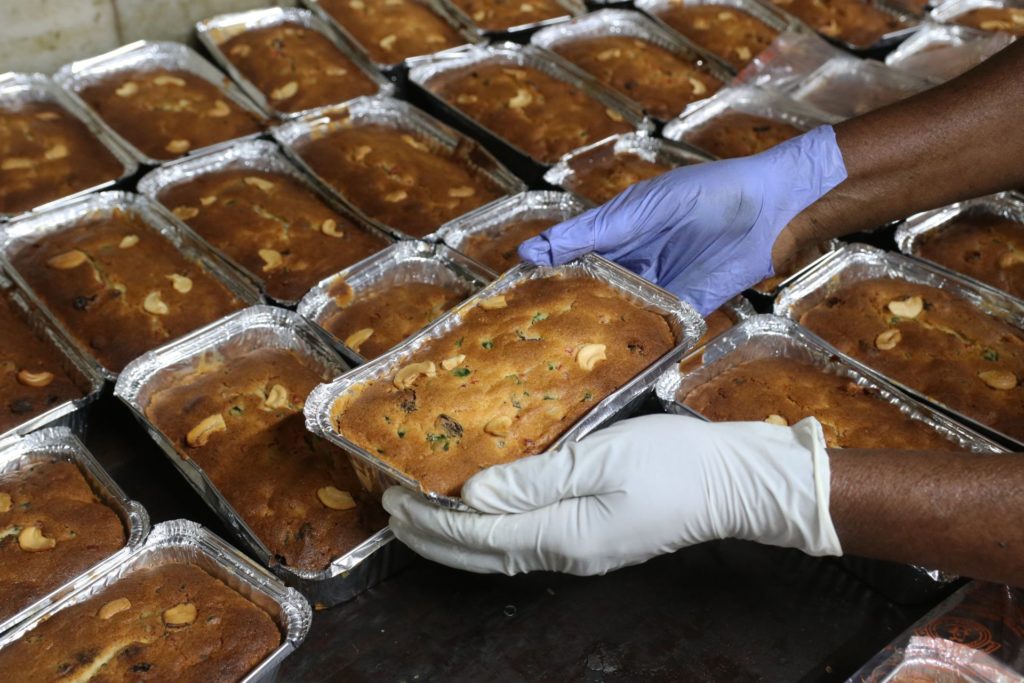
Christianity came to India in waves. It is believed that Thomas the Apostle arrived in present-day Kerala in 52 CE and built the first church. Syrian Christians believe he died in what is now Chennai in Tamil Nadu. San Thome Basilica stands where some of his remains were buried. Toward the end of the 15th century, the Portuguese explorer Vasco da Gama landed on Indian shores, followed by others, paving the way for Portuguese colonies in the region. Christian missionaries, who set up Western educational institutes, spread the religion further. The trend continued under the British Empire.
What is unique about India is the “indigenization of Christmas,” notes Liddle. It can be seen in the regional dishes prepared for Christmas feasts and celebrations. Duck curry with appams (rice pancakes) is popular in Kerala, while Nagaland prefers pork curries, rich with chilies and bamboo shoots. In Goa, dishes with Portuguese origins, such as sausage pulao, sorpotel and xacuti, adorn the tables. Biryanis, curries and shami kababs are devoured across north India.
The same regional diversity can be seen in Christmas snacks. “East Indians,” a Christian community in Mumbai described as such for their close ties to the East India Company, fill their plates with milk creams, mawa-filled karanjis (pastry puffs filled with dried whole milk), walnut fudge, guava cheese and kulkuls (sweet fried dough curls). In Goa, a platter of confectioneries called kuswar is served, including kormolas, gons, doce and bolinhas, made with ingredients ranging from coconut to Bengal gram, a yellow lentil. In Kerala, rose cookies are popular. Common across north Indian Christian households are shakkarpara, a sweet fried dough, covered in syrup; namakpara, a savory fried dough studded with cumin seeds; gujiyas, crisp pastries with a sweetened mix of semolina, raisins and nuts; and baajre ki tikiyas, thin patties made from pearl millet flour sweetened with jaggery, an unrefined sugar.
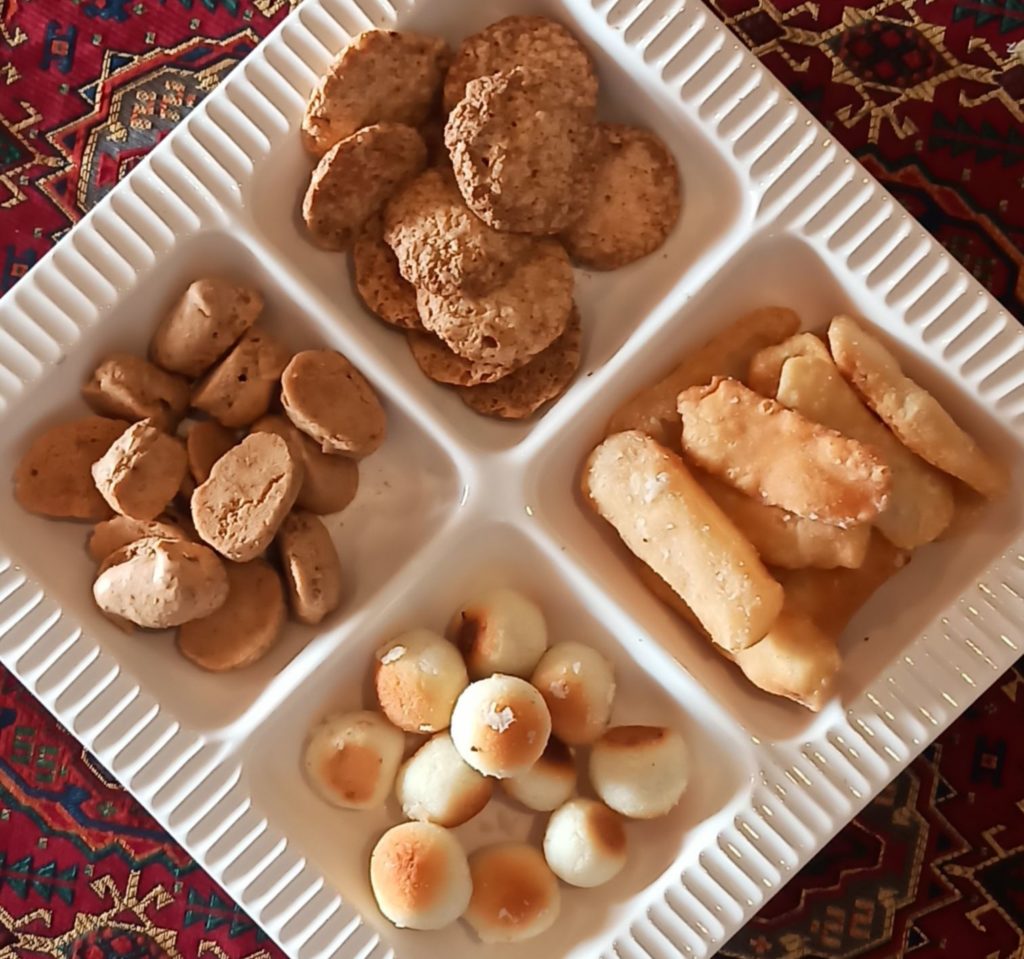
Liddle, who used to spend the festival at her ancestral home in the north Indian town of Saharanpur, also tells us about a lesser-known variation of the Christmas cake: cake ki roti. (In Hindi, “roti” means “flatbread.”) Like most communities in India, many Christian families in north India buy the ingredients for the Christmas cake themselves and take them to a baker who will prepare it. Bakers used to make the Christmas cake by the quintal (220 pounds) or more, and cake ki roti was a byproduct of that large-scale baking. The leftover Christmas cake batter was “not enough for an entire tin, not so little that it can be thrown away,” Liddle explained. So the baker would add flour and make a dough out of it. “It would be shaped into a large, flat disc and baked till it was golden and biscuity,” she said. The resulting cake ki roti may have “stray bits of orange peel or candied fruit, a tiny piece of nut here or there, a faint whiff of the spices … It was not even the ghost of the cake. A mere memory, a hint of Christmas cake.” Since cake ki roti was considered “too pedestrian,” it wasn’t served to the guests. Instead, it would be reserved until the New Year and eaten only after all the other snacks were gone.
Jerry Pinto, co-editor and contributor to “Indian Christmas,” recalled his childhood Christmases in Mumbai. There may not have been much snow in this tropical city, but wintry scenes of London and New York adorned festive cards and storybooks, and children would decorate the casuarina tree with cotton balls, assuming it to be pine. The mood would be set with an old Jim Reeves album featuring “White Christmas.” “Where do old songs from the U.S. go to die? They go to Goan Roman Catholic homes and parties,” quipped Pinto. Raisins would be soaked in rum in October, and cakes baked at an Iranian bakery. Every year, there was a debate about whether marzipan should be made with or without almond skins. The “good stuff” meant milk creams and cake slices with luscious raisins, while rose cookies and the neoris (sweet dumplings made of maida or flour and stuffed with coconut, sugar, poppy seeds, cardamom and almonds) were just plate-fillers.
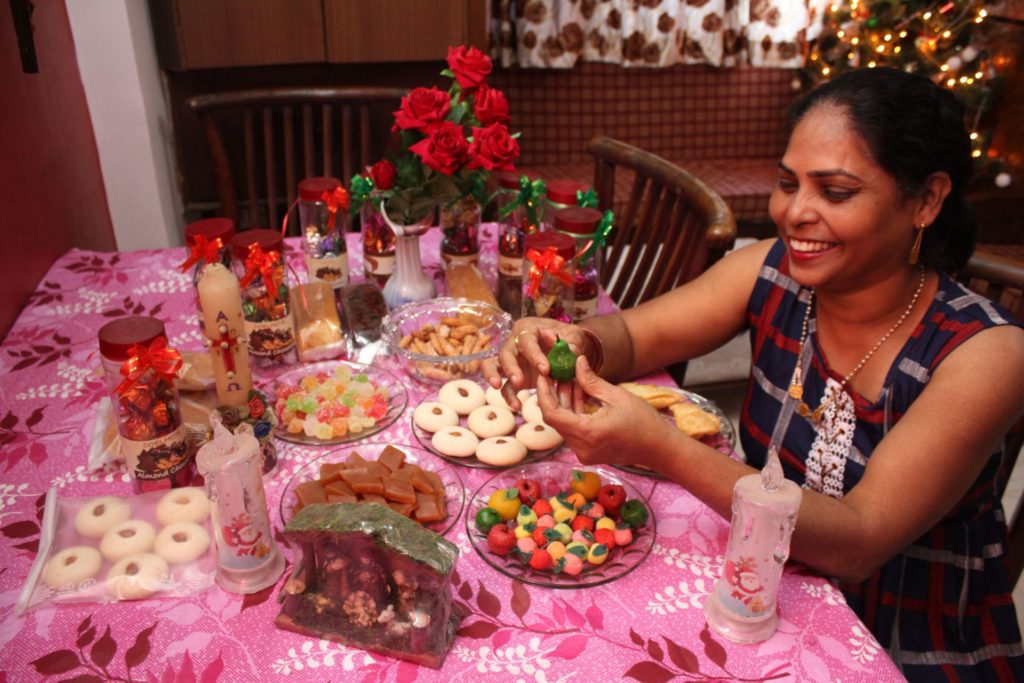
The feasting is accompanied by midnight mass, communal decorations and choral music, with carols sung in Punjabi, Tamil, Hindi, Munda, Khariya, Mizo tawng, as well as English. “One of our favorite carols was a Punjabi one, which we always sang with great gusto: ‘Ajj apna roop vataake / Aaya Eesa yaar saade paas’ [‘Today, having changed His form / Jesus comes to us, friend’],” Liddle remembered.
Starting as early as October, it would not be unusual to hear Christmas classics by Boney M., ABBA and Reeves in Nagaland’s Khyoubu village. “The post-harvest life of the villagers is usually a restful period, mostly spent in a recreational mood until the next cycle of agricultural activities begins in the new year,” wrote Veio Pou, who grew up in Nagaland.
“Christmas is a time when invitations are not needed. Friends can land … at each other’s homes any time on Christmas Eve to celebrate. … The nightly silence is broken, and the air rings with Christmas carols and soul, jazz and rock music. Nearly every fourth person in Shillong plays the guitar, so there’s always music, and since nearly everyone sings, it’s also a time to sing along, laugh and be merry,” wrote Patricia Mukhim, editor of Shillong Times, a local newspaper in the northeastern state of Meghalaya.
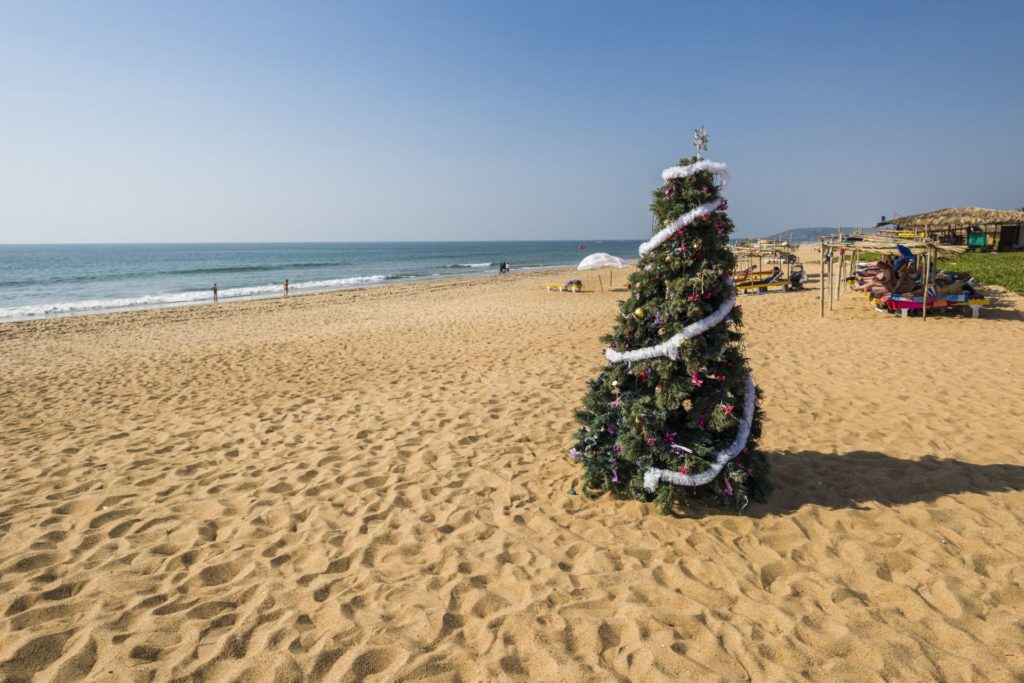
Neighborhoods in areas with Christian populations, like Goa and Kerala, are lit up weeks in advance with fairy lights, paper lanterns and Christmas stars. In Mizoram’s capital of Aizawl, local authorities hold a competition every Christmas for the best-decorated neighborhood, with a generous prize of 500,000 rupees ($6,000) awarded to the winner. This event is gradually becoming a tourist attraction.
Rural India has its own norms and traditions. In the villages of the Chhota Nagpur region, mango leaves, marigolds and paper streamers decorate homes, and locally available sal or mango trees are decorated instead of the traditional evergreen conifer. The editor Elizabeth Kuruvilla recalled that her mother had stars made of bamboo at her childhood home in Edathua, a village in Kerala’s Alappuzha district. The renowned Goan writer Damodar Mauzo, who grew up in a Hindu household, said his family participates in many aspects of the Christmas celebrations in the village, including hanging a star in the “balcao” (“balcony”), making a crib and attending midnight mass.
In the Anglo-Indian enclave of Bow Barracks in Kolkata, Santa Claus comes to the Christmas street party in a rickshaw — the common form of public transport in South Asia. “Kolkata’s Bengali and non-Bengali revelers now throng the street, lined by two rows of red-brick terrace apartment buildings, to witness the music and dance and to buy the home-brewed sweet wine and Christmas cake that some of the Anglo-Indian families residing there make,” wrote the journalist Nazes Afroz. Bow Barracks was built to house the Allied forces stationed in Kolkata during World War I, after which they were rented out to the city’s Christian families.
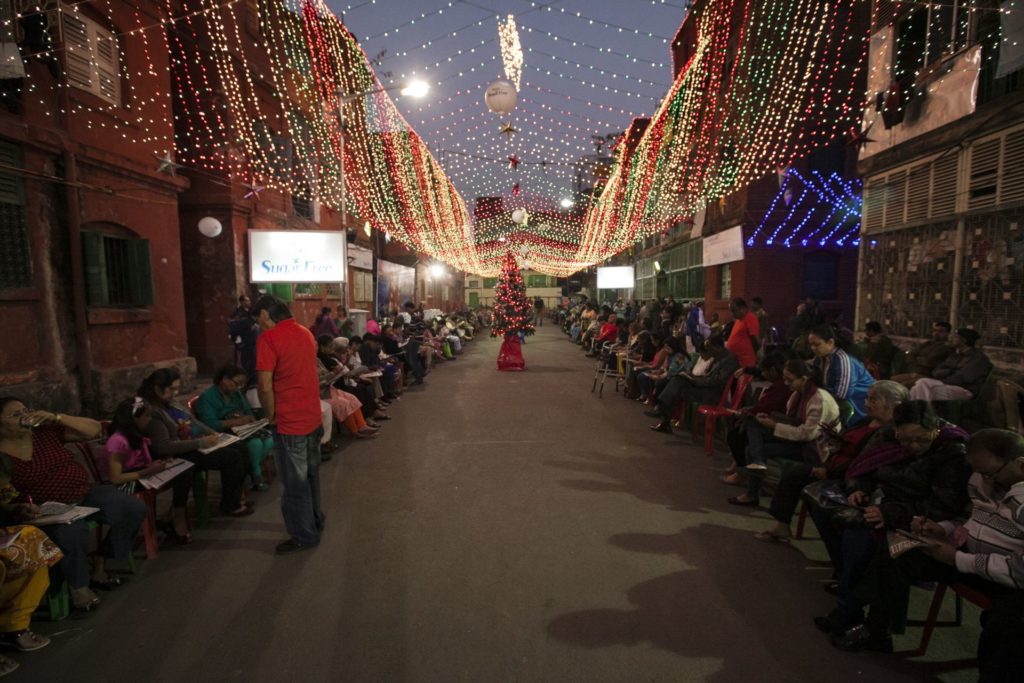
Kolkata also is home to a tiny community of about 100 Armenian Christians, who celebrate Christmas on Jan. 6, in line with the Armenian Apostolic Church. Many break their weeklong fast at the Christmas Eve dinner, known as “Khetum.” The celebration begins with an afternoon mass on Christmas Eve followed by a home blessing ceremony to protect people from misfortune, held at the Armenian College and Philanthropic Society, an important institution for the community. The Khetum arranged for the staff members and students includes a customary pilaf with raisins and fish and anoush abour, an Armenian Christmas pudding made with wheat, berries and dried apricots, among other dishes. The Christmas lunch also includes traditional Armenian dishes such as dolma (ground meat and spices stuffed into grape leaves) and harissa, a porridge-like stew made with chicken, served with a garnish of butter and sprinkled ground cumin.
“Missionaries to Indian shores, whether St. Thomas or later evangelists from Portugal, France, Britain or wherever, brought us the religion; we adopted the faith but reserved for ourselves the right to decide how we’d celebrate its festivals,” Liddle wrote. “We translated the Bible into our languages. We translated their hymns and composed many of our own. We built churches which we at times decorated in our own much-loved ways.”



